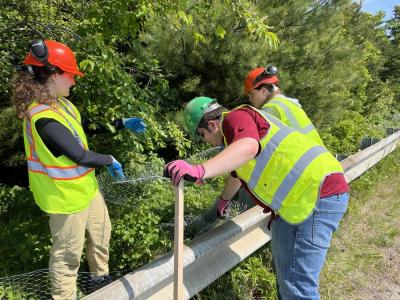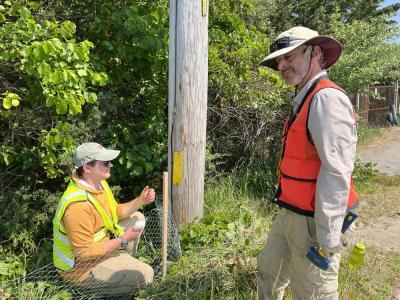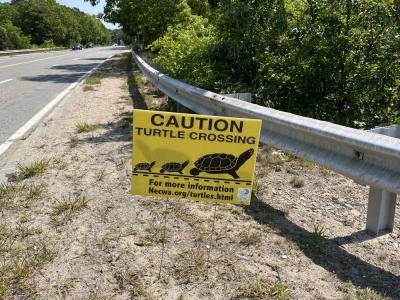For terrapins, good fences make good nesters
MARION — Why did the diamondback terrapin cross the road?
It may sound like the setup to a joke, but the answer to that question is crucial to the fate of the South Coast’s salt marsh ecosystems.
In June, female turtles leave their habitat in search of soft, sandy, sunny areas where they can lay their eggs. This often requires them to cross the Route 6 causeway bridge over the Weweantic River, linking Marion and Wareham. According to Dani Marston, director of the New England Coastal Wildlife Alliance’s Diamondback Terrapin Project, about seven turtles meet their ends on the bridge each year.
“When you lose a nesting female terrapin,” Marston said, “you’re losing all of the descendants of that turtle. You’re losing hundreds of future turtles.”
To keep the turtles off the road, volunteers with the New England Coastal Wildlife Alliance, joined by employees from the Massachusetts Department of Transportation and MassWildlife, installed chain-link fencing on both sides of the bridge on Friday, June 2.
The workers and volunteers discussed scientific papers while rolling out the fencing and pounding wooden stakes into the ground, sweating in the summer sun.
The humans had about as hard of a time crossing the road as the turtles do.
“Let me get some mallets, if I don’t get killed,” said New England Coastal Wildlife Alliance President Carol “Krill” Carson. “This place is nuts! I don’t know how the turtles do it.”
“This is a turtle mortality hot spot,” said MassWildlife Endangered Species Review Biologist David Paulson. “This turtle species is an important natural resource to the commonwealth. Biodiversity is important.”
Diamondback terrapins are an indicator species, meaning that their health can be measured alongside the health of the salt marshes they live in.
If not for the terrapins, snails — terrapins’ preferred prey — would eat all of the vegetation in the area. This would cause the soil to erode and the entire food chain to collapse.
Paulson said that due to habitat loss caused by human settlement, female terrapins are forced to travel greater distances to lay their eggs. This puts them in greater danger of getting run over.
“Terrapins seem to be relatively hearty,” Marston said, “but if the salt marsh gets unhealthy, you’re going to wind up with worse water quality for everyone. Our bays are going to be polluted, our water is going to be polluted.”
Salt marshes are crucial habitats for fish, sharks, birds, oysters and quahogs.
“Everything New England stands for relies on the salt marsh,” Marston said. “If you lose the salt marsh, you lose New England.”

















